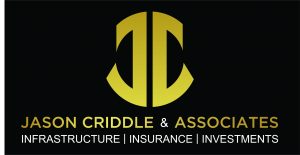
Any investor can start a self-directed IRA (Individual Retirement Account) and utilize it to invest in small businesses and private software companies through a process known as self-directed investing. Here’s how it can be done:
Establish a Self-Directed IRA:
The first step is to establish a self-directed IRA with a custodian that allows for alternative investments. Traditional IRA custodians usually limit investment choices to stocks, bonds, and mutual funds, but self-directed custodians offer a broader range of investment options, including small businesses and private companies.
Fund the Self-Directed IRA:
Once the self-directed IRA is established, the investor needs to fund it by transferring funds or rolling over funds from an existing IRA or retirement account. The specific steps for funding will vary depending on the IRA custodian, so it’s important to follow their instructions or seek guidance from a financial professional.
Research and Identify Investment Opportunities:
After the self-directed IRA is funded, the investor can start researching and identifying potential investment opportunities in small businesses and private software companies. This can be done by networking, attending industry events, or using platforms that connect investors with startups and private companies.
Perform Due Diligence:
Before making any investments, it’s crucial to conduct thorough due diligence on the target companies. This includes evaluating their business models, financials, management team, growth prospects, and potential risks. Seeking advice from professionals like attorneys, accountants, or business consultants can aid in the due diligence process.
Make Investments:
Once the investor has identified suitable opportunities and completed their due diligence, they can direct their self-directed IRA custodian to execute the investments on their behalf. The custodian will handle the administrative aspects of the transaction, including paperwork and compliance with IRS regulations.
Monitor and Manage Investments:
After making investments, it’s important for the investor to actively monitor and manage their holdings. This may involve attending shareholder meetings, reviewing financial reports, and keeping track of industry trends that may impact the performance of the investments.
Consider Exit Strategies:
As the investor’s investments in small businesses and private companies mature, they should consider possible exit strategies. This could include the company going public, getting acquired, or providing other ways for investors to exit their positions. Having a plan in place for potential exits is essential to ensure liquidity and maximize returns.
It’s worth noting that self-directed IRA investments can carry higher risks than traditional IRA investments. It’s important for investors to carefully assess the risks and potential returns before committing funds. Consulting with a financial advisor or tax professional who is knowledgeable about self-directed IRAs can provide valuable guidance throughout the process.

CEO of SmartrHoldings and SmartrMarketing
International best-selling author.
Published on Forbes, Quora, and many more popular online publications.


